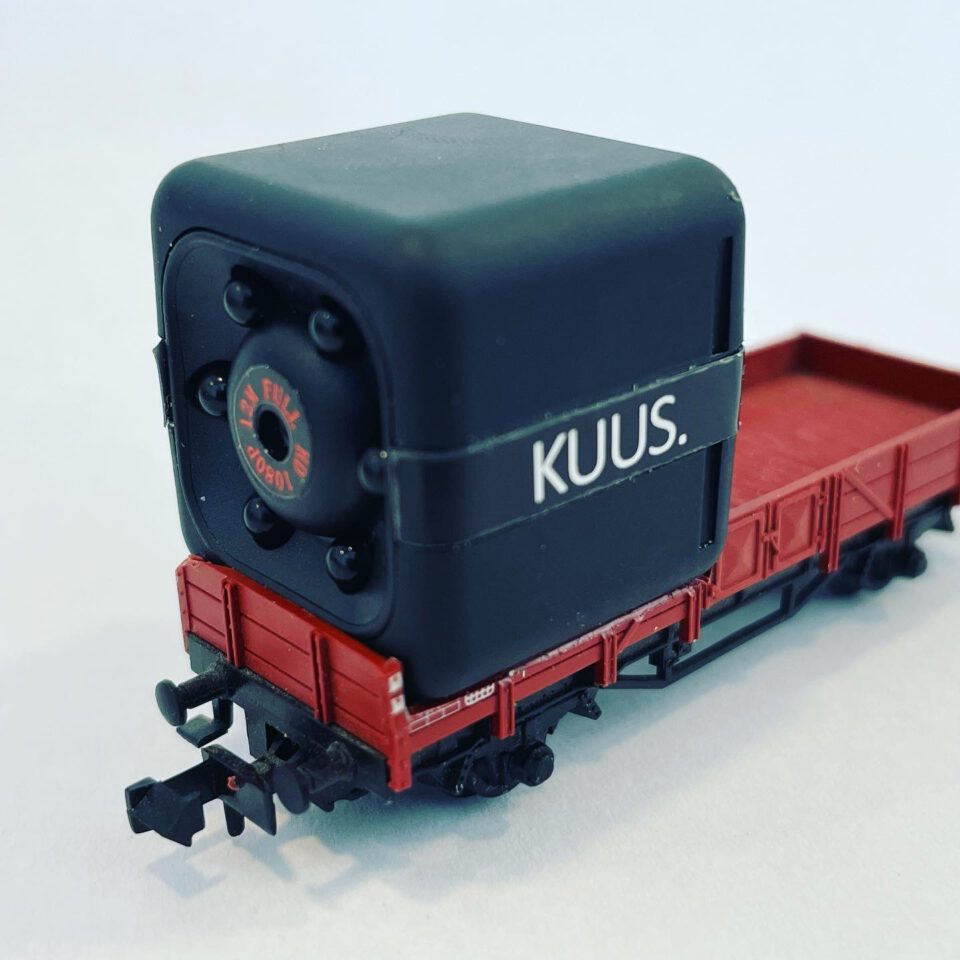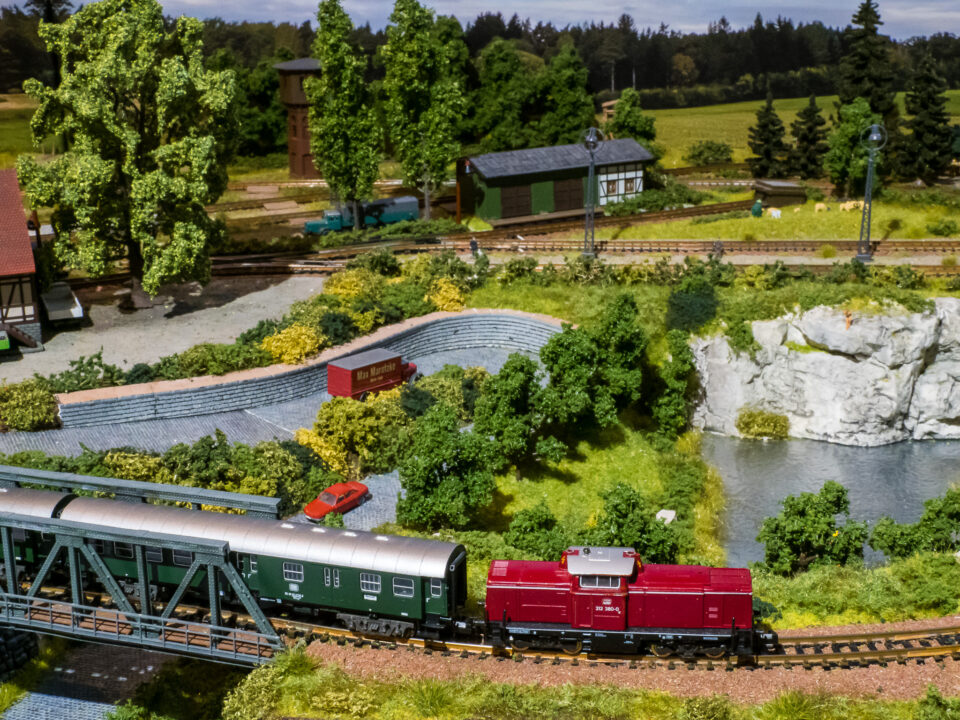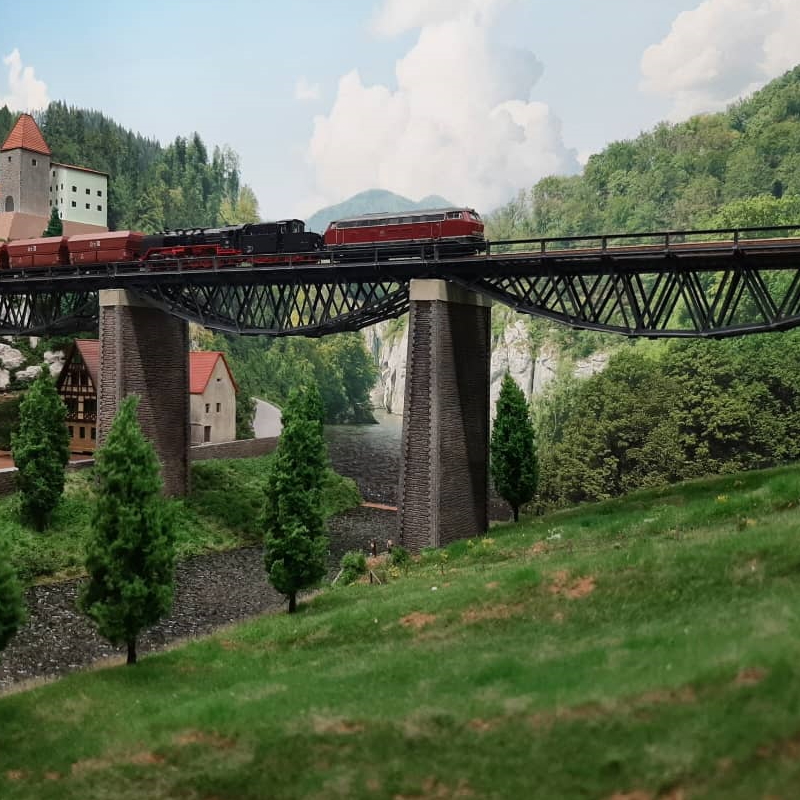What would it be like to see what it’s like to drive your own N scale model railroad? The driver’s view. For many scales there are standard camera locomotives or wagons that show this. In scale N, there is no such offer or cameras are extremely expensive. We found an affordable alternative in the form of a small ‘espionage’ camera.
Limited space
If a model railway has overhead wires, there is not much room left for a camera that is placed on a wagon. There is approximately 4 centimeters available between the top of the rails and the overhead wires. A flat wagon is easily 1.5 centimeters high. Not even 2.5 cm remains. You have to take into account that in some places a few millimeters less are available because a layout is not always exactly the same – just like in the real world.
No overhead line? Then you still have to take into account the ‘profile space’, how much space the camera can take up in width. This does not only depend on any signals and other objects that are along the track, the wagon can also only handle a limited width without becoming unstable.
The spy camera
With such great demands on the compactness of the camera, we arrived at a spy camera from the KUUS brand. This camera is 2.3 x 2.3 x 2.3 cm. And fits on a flat wagon. This leaves a few millimeters free between the camera and the overhead wire.
The camera can record in HD (High Definition) format and also has a night mode that allows us to see the tunnels. The images are saved on the supplied memory card. The manual of the camera is clear – also in Dutch – and the operation is simple.
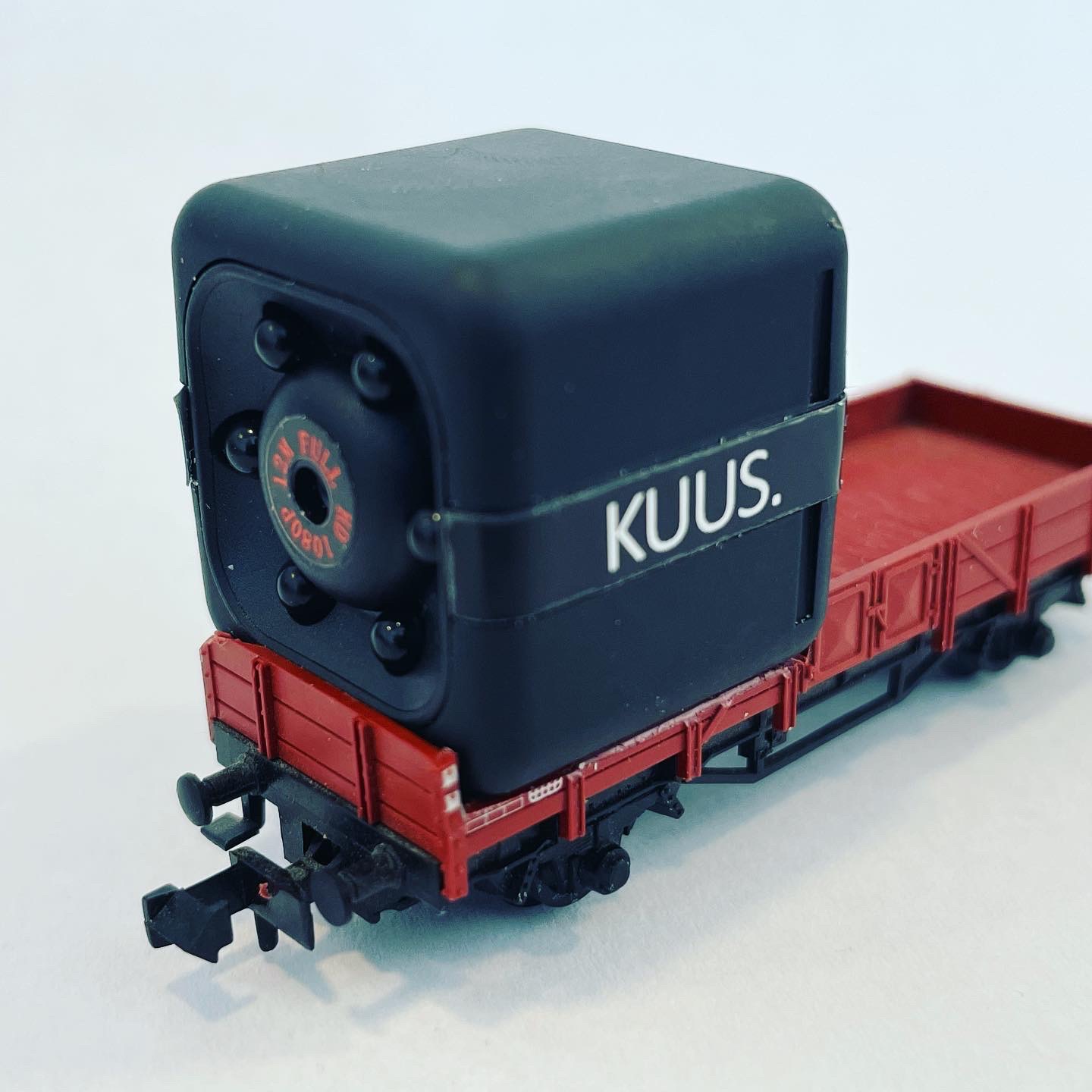
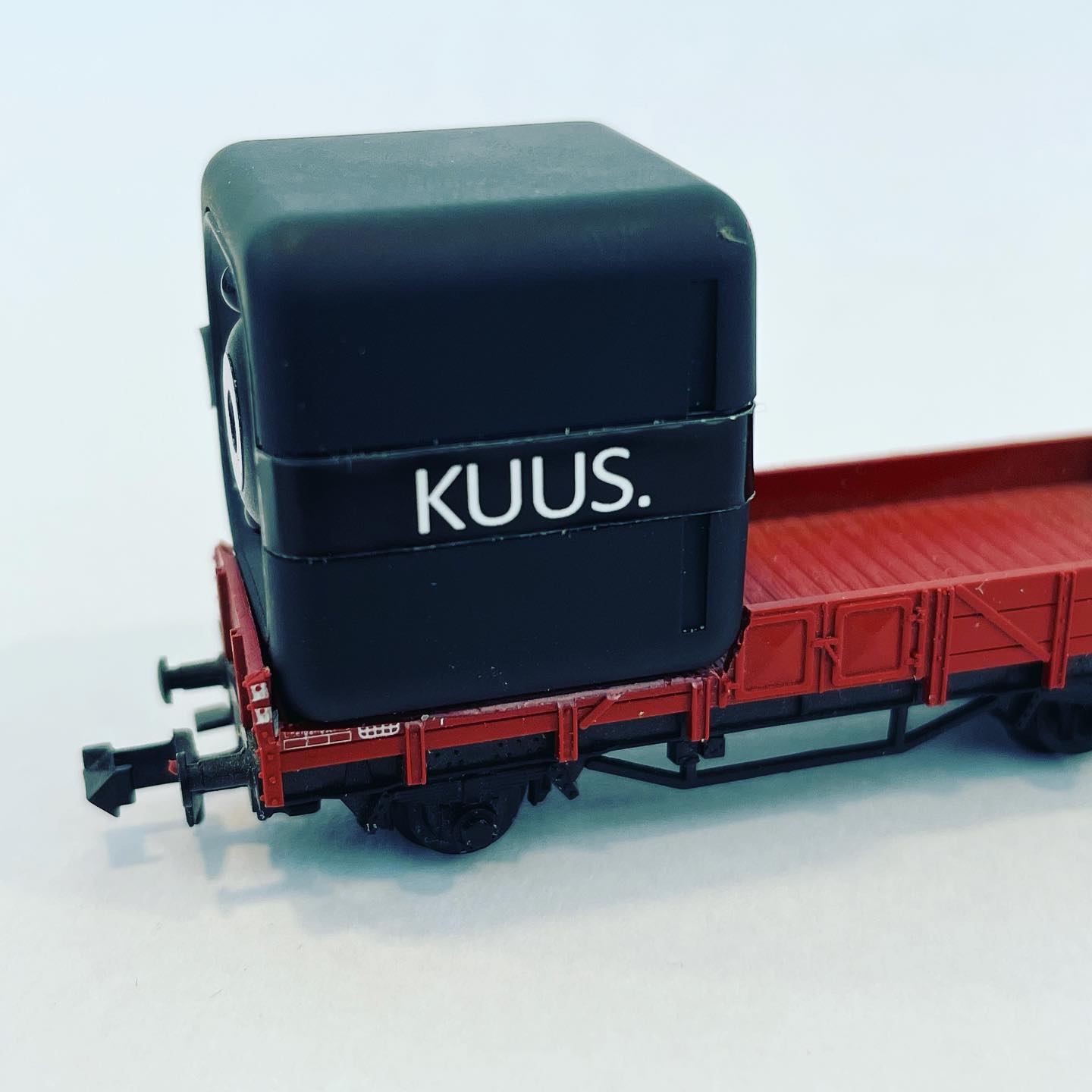
Mounting on a wagon
We take a standard flat wagon from Fleischmann and remove the platform exactly to size. The camera is more or less clamped into the carriage. Pinning can be done in a number of ways:
- If height is not a limiting factor; then the supplied clamp can be glued to the wagon, or better yet: screwed. You can reuse the screw from the clamp. This means that the camera is firmly in place, at the right angle, and you can easily click it in and out.
- Does the height have to be taken into account because there is a tunnel or overhead line? Then the camera can be glued, secured in the container with an elastic band or with tape.
- The last option is to remove the container and mount the supplied clamp on the chassis. The wagon is therefore less stable
Stability and smooth running are essential. Due to the small scale, every movement is visible on a large scale. You will notice that many of your rails are not as tight as you first see.
The damage a moving camera train can do can be enormous. At a reasonable speed, the solid housing simply taps all kinds of scenery ‘on the side’. In short, caution is advised. The first two laps at low speed, follow very closely and hand above the stop button.
And action: the movieS
The camera is turned on; and the wagon is pushed over the track. A smooth running of the locomotive gives a better picture. For digital drivers it is an option to activate the ‘shunting mode’ of a locomotive. Drive slowly. You will notice that the camera struggles with some LED lighting. That can give a purple haze in the picture. The quality is reasonable, as you can see in the video below.
- mini camera
- Supplier: KUUS
- Item number: C1
- Recommended price: € 39.95 (all inclusive, but without wagon)
This article is also available in:
![]() Nederlands
Nederlands
